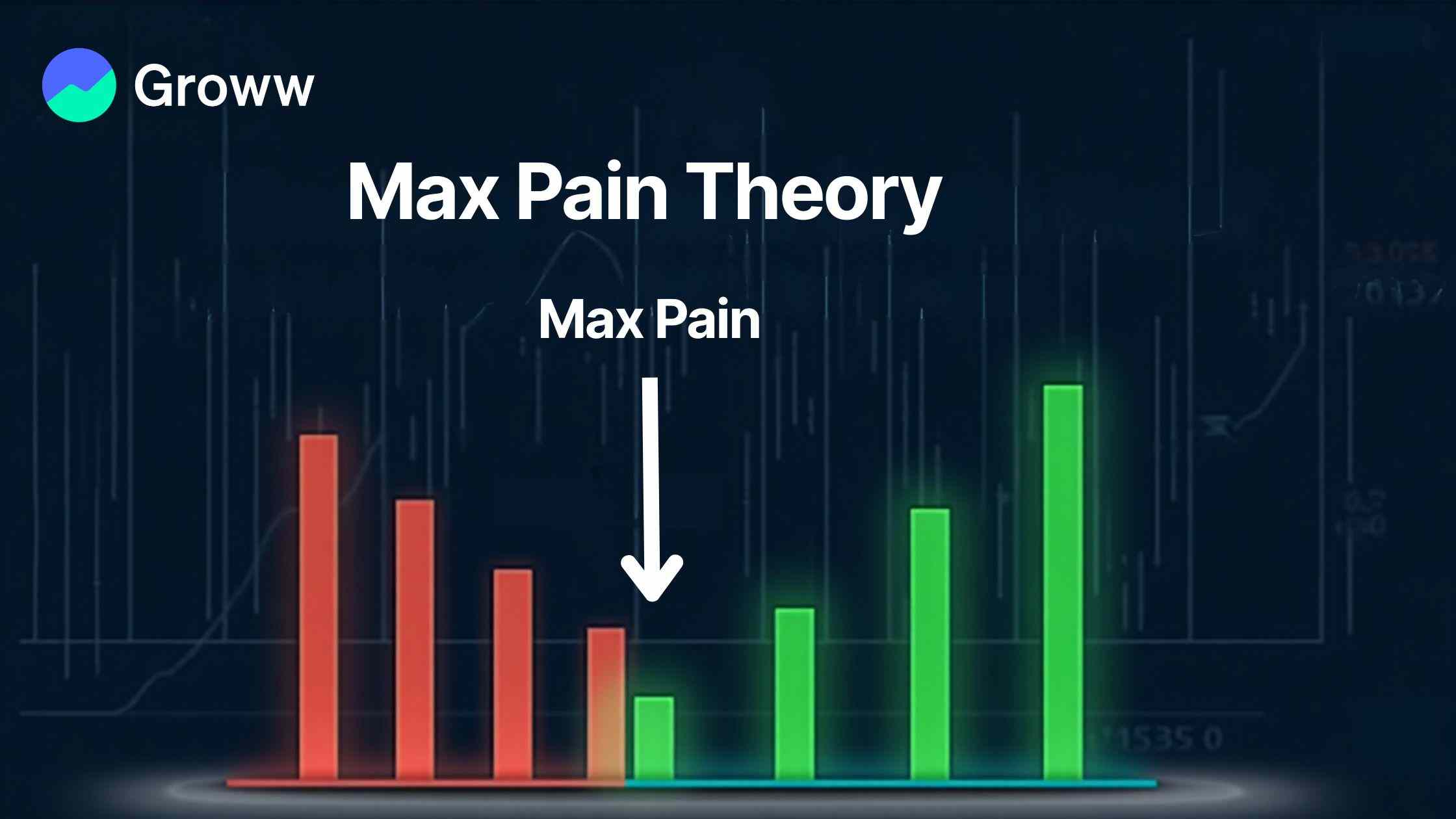What is Max Pain Theory?

Max Pain theory is a key strategy in options trading, suggesting that the price of any underlying asset will tend to shift towards the strike price, where the maximum number of options contracts (both calls and puts) will expire without any worth. This is the sweet spot where options sellers (writers) may scale up profits by lowering potential losses on options contracts. For options buyers, this indicates the point of maximum potential loss.
So, the Max Pain strike price is the strike price where the most options contracts are open and will expire out-of-the-money (OTM) in case the price of the underlying asset stays at that level on the date of expiration. While the theory may offer insights into possible price movements, it may not always be accurate since it assumes that participants are focused on maximising their profits by minimising their potential losses on options contracts.
How Options Expiration Affects Markets
Knowing the meaning of max pain in options trading is essential, particularly how expiration impacts stock prices. This means that the closer you move to options expiration (OPEX), the higher the risk for delivery in case of the issuer.
The maximum pain theory in options trading thus means that whenever this options contract nears its expiry, the price of the underlying stock will tend to shift towards the price at which the maximum number of options contracts will expire worthless. It will thus lead to contract holders contracting what is known as the maximum pain. Predicting option expiry behaviour is thus essential.
Calculating Max Pain Levels
This is the total of the outstanding call and put rupee value of every strike price that’s in-the-money (ITM). The process involves the following:
- Working out the difference between the contract’s strike price and the price of the underlying asset
- Multiplying the difference by the open interest at the strike price
- Adding the rupee value for the call and put options at the strike price
- Repeating the process above for every strike price in the contracts
- The highest value strike price will be the maximum pain point.
Trading Strategies Based on Max Pain
Here are some trading strategies based on the Max Pain theory that you can consider:
- Identifying Max Pain point: This is calculated by finding the strike price where the most open put and call options are concentrated.
- Tracking the Expiration Dates: Expiration dates have to be monitored because as the date nears, the prices tend to move towards the Max Pain point, which is vital for short-term trading activities.
- Trading with the Trend: The price action has to be followed with the Max Pain level in place. The stock may trade farther away from the Max Pain point at the expiration. As the time of expiration approaches, the market may move towards the Max Pain level. This information can be used to buy calls and put on the expectation of the price action following this trend.
- Using for Hedging: With long option positions, you can use this theory to manage your risks. In case the price is far away from the Max Pain level, you should reevaluate your position to reflect the price movement probability to such levels.
- Using with Other Indicators: It is vital to know that Max Pain is not a standalone and foolproof indicator to use. You should use it with other technical tools like volume patterns, trends, and support and resistance.
Limitations of Max Pain Theory
Here are some of the limitations of the Max Pain theory that you should note.
- Inaccuracies: The theory may not always be accurate, since aspects like market trends and news may sometimes impact its influence.
- Not applicable for every security: This is most observable in the case of options markets that are highly liquid and do not apply to all securities.
- Highest relevance near the expiration: The effect of the strategy is usually stronger with the expiration date approaching.
Conclusion: Leveraging Max Pain for Better Trading Decisions
Leveraging Max Pain in options trading may help you make better decisions. This analysis can be integrated into your strategy for indices like Bank Nifty and Fin Nifty, helping you understand the intricate market dynamics and make better trading decisions. However, note that you should combine other technical indicators with this strategy without depending on it completely. It can give you insights into potential price targets, help you manage risks better, and optimise your options strategies accordingly.